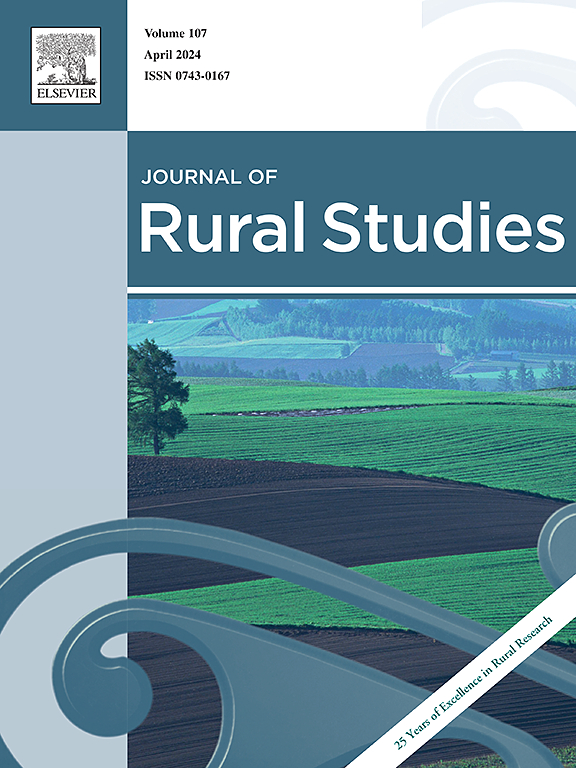阿米什人:八十年理论化的批判性综合
IF 5.7
1区 社会学
Q1 GEOGRAPHY
引用次数: 0
摘要
在过去的80年里,研究人员已经提出了几个关于阿米什人的族群理论,阿米什人是一个快速增长的北美农村人口。然而,这些理论都是隐晦地或零敲碎打地提出的,总体上很难理解。这使得理论参与变得困难,从而限制了知识的进步,允许错误的概念影响结果,并使研究重点难以证明。本文通过综合和评价七个主要理论来澄清阿米什人的族群理论。早期的结构-功能方法强调社会整合和对变化的抵制,最终在Hostetler将阿米什人理论化为一个反对变化的民间社会。奥尔山随后反驳道,他将阿米什人理论化为适应变化、善于计算、做出价值理性选择的主体,而埃宁格的替代方案是一个将微观互动与宏观结构联系起来的彻底的符号学框架。继Hostetler之后,Kraybill的“与现代性谈判”观点将Amish/outside一分为二,但允许系统强化的混合变化。诺尔特/迈耶斯使用了一个“拼凑”的类比,强调了阿米什人内部的多样性,而赫斯特/麦康奈尔认为多样性来自内部/外部力量和结构/机构之间的“紧张地形”。最后,雷什利的布迪厄式分析将阿米什人框定为拥有行动的“社区剧目”,解释了社会领域内协调和有争议的变化。反复出现的理论挑战包括社会结构的具体化和对个人行为的过度建构,对“边界”的概念性过度依赖,以及对权力、冲突和代理的理论化不足。展望未来,学者们应该放弃承载价值的发展语言(传统/现代),参与更广泛的学科对话,解决结构/代理问题,进行比较人口研究,并鼓励理论多元化。通过使现有的族群理论具有凝聚力和明确性,并批判性地参与他们的主张,本文将学术界推向更有意地参与人口理论。本文章由计算机程序翻译,如有差异,请以英文原文为准。
Amish peoplehood: A critical synthesis of eight decades of theorizing
Across eight decades, researchers have advanced several peoplehood theorizations of the Amish, a rapidly growing, fundamentally rural, North American population. However, these theorizations have been proposed implicitly or piecemeal and are poorly understood on the whole. This makes theoretical engagement difficult, which then limits knowledge advancement, allows fallacious concepts to shape results, and makes research priorities difficult to justify. This article clarifies Amish peoplehood theorizations by synthesizing and evaluating seven major theorizations. Early structural-functional approaches emphasized social integration and resistance to change, culminating in Hostetler's theorization of Amish as a change-adverse folk society. Olshan then countered, theorizing Amish as change-accommodating, calculating agents making value-rational choices, while Enninger's alternative was a thorough semiotic framework linking micro-interactions to macro-structures. Following Hostetler, Kraybill's “negotiating with modernity” perspective dichotomized Amish/outside but permitted system-reinforcing hybrid changes. Using a “patchwork” analogy, Nolt/Meyers emphasized internal Amish diversity while Hurst/McConnell argued diversity came from “terrains of tension” between internal/external forces and structure/agency. Finally, Reschly's Bourdieuian analysis framed Amish as possessing “community repertoires” of action, explaining both coordinated and contested changes within social fields. Reoccurring theoretical challenges include reification of social structures and overstructuring individual action, conceptual overreliance on “boundaries,” and undertheorization of power, conflict, and agency. Moving forward, scholars should drop value-laden developmental language (traditional/modern), engage broader disciplinary conversations, resolve structure/agency problems, conduct comparative population research, and encourage theoretical plurality. By rendering existing peoplehood theorizations cohesively explicit and critically engaging their claims, this article moves scholarship toward more intentional engagement with population theorization.
求助全文
通过发布文献求助,成功后即可免费获取论文全文。
去求助
来源期刊

Journal of Rural Studies
Multiple-
CiteScore
9.80
自引率
9.80%
发文量
286
期刊介绍:
The Journal of Rural Studies publishes research articles relating to such rural issues as society, demography, housing, employment, transport, services, land-use, recreation, agriculture and conservation. The focus is on those areas encompassing extensive land-use, with small-scale and diffuse settlement patterns and communities linked into the surrounding landscape and milieux. Particular emphasis will be given to aspects of planning policy and management. The journal is international and interdisciplinary in scope and content.
 求助内容:
求助内容: 应助结果提醒方式:
应助结果提醒方式:


